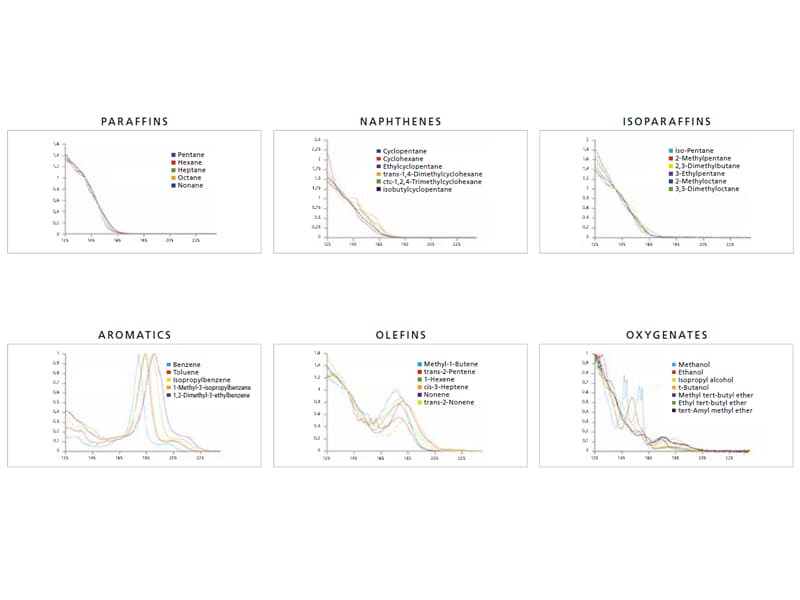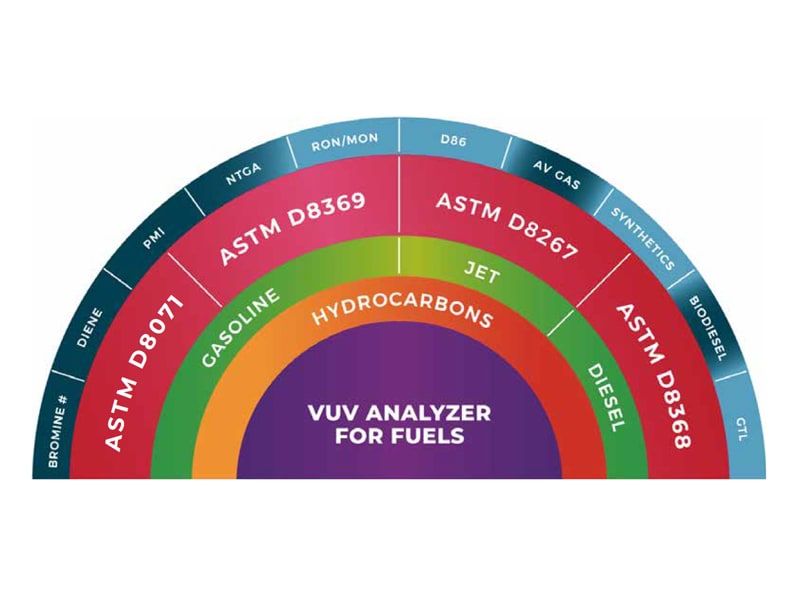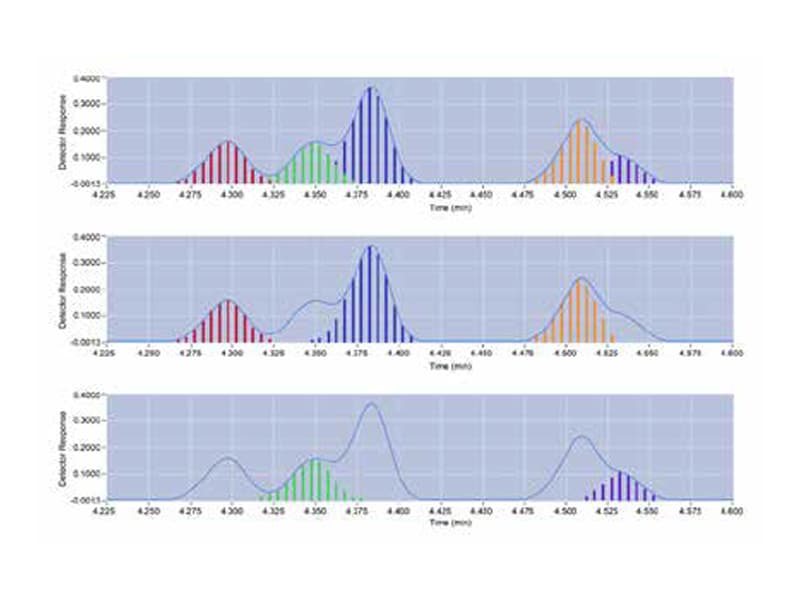VGA-100/ VGA-101
Gas Chromatography Detector
Meet the alternative
with a vacuum ultraviolet (VUV) detector
for Gas Chromatography
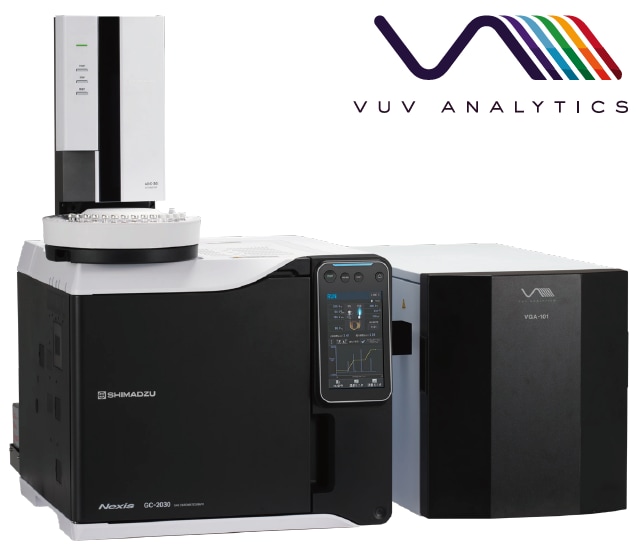
VUV system is compliant with ASTM D8071/D8267/D8368/D8369/D8519. Vacuum ultraviolet (VUV) spectroscopic detectors can provide a new dimension of chemical analysis accuracy for hydrocarbon analysis. VUV light creates unique spectral signatures in the gas phase that result in unambiguous compound identification and quantitative analysis across a wide spectrum of complex applications.
* The VUV detector VGA-100/ VGA-101 are products of VUV ANALYTICS, INC.
What is Vacuum Ultraviolet (VUV) Detector
The VUV (Vacuum Ultraviolet) detector is designed to collect absorption spectrum of compounds eluted from GC in the wavelength range of 120 nm to 240 nm (vacuum ultraviolet region). It consists of a deuterium lamp, flow cell, grating device and detection device. Hydrocarbons, such as fuels, have strong absorption in the range of 115 nm to 185 nm (due to σ→σ* and π→→π* transitions), making the VUV detector an ideal choice for fuel analysis.
The VUV wavelength region is typically characterized by significant background absorption. Traditionally, very high-energy photons generated by a synchrotron facilities were used to obtain VUV spectrum. The VGA-100/101 VUV detector minimizes background absorption to an exceptional degree, enabling easy acquisition of VUV spectrum.
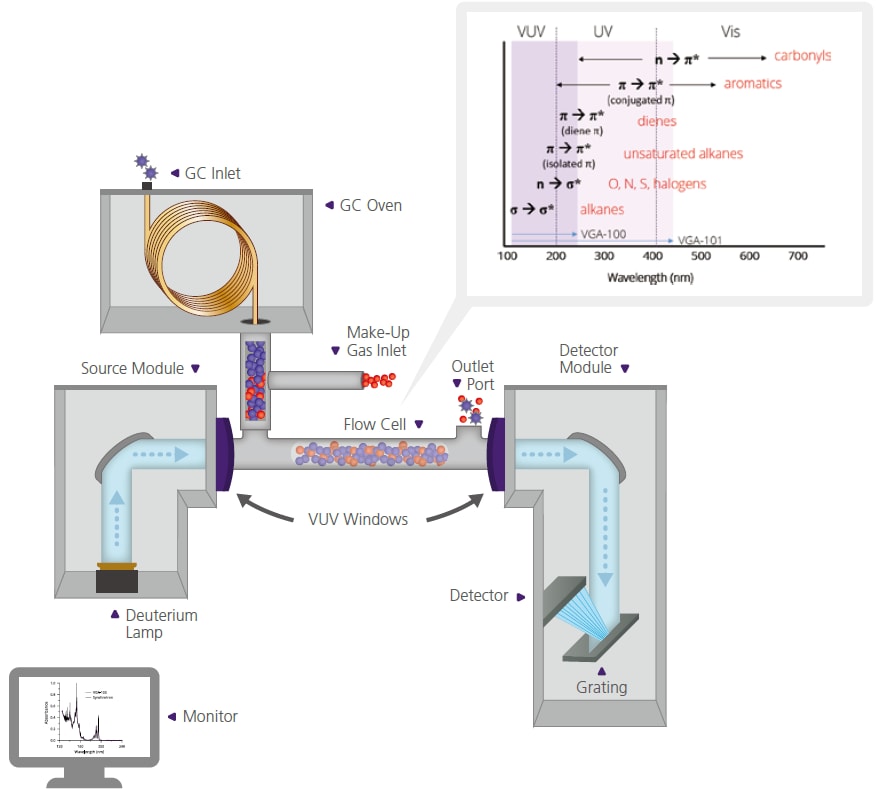
Time Interval Deconvolution, TID, The verified hydrocarbon analyzer, VHA, VUV Analyze, VUV Analyzer, VUVision and VUV Analytics are trademarks of VUV Analytics, Inc. all rights reserved.
Features
News / Events
-
Explore GC Systems for Official Standards
Each Shimadzu System GC Analyzer is meticulously built and rigorously tested to meet the specific analytical needs outlined by applicable industry standards, providing dependable performance for a wide range of applications.
-
Unlock New Possibilities with the Fully Loaded Brevis GC-2050: Expanded Inlets, New Detectors, Lower Costs
Explore how the Shimadzu GC Brevis GC-2050 can help your lab achieve significant cost savings and enhance efficiency.
-
PONAsolution has been released
The PONAsolution is an analytical software for LabSolutions that effectively supports PONA Analysis and Detailed Hydrocarbon Analysis.
-
User's Voice from Nanospace Catalysis Research Unit, Institute of Integrated Research (IIR), Institute of Science Tokyo
From the Development of Zeolite Catalysts to Achieving Carbon Neutrality using Gas Chromatography
-
The Gas Chromatograph Brevis GC-2050
The Gas Chromatograph Brevis GC-2050 has been fully updated -compact, powerful, and cost-efficient- crafted to elevate your productivity to unprecedented levels.
-
COA Search for SH Series GC Columns is now available
A Certificate of Analysis (COA) is a document that ensures the product meets the shipping requirements. COA Search for SH Series GC Columns has been released.



